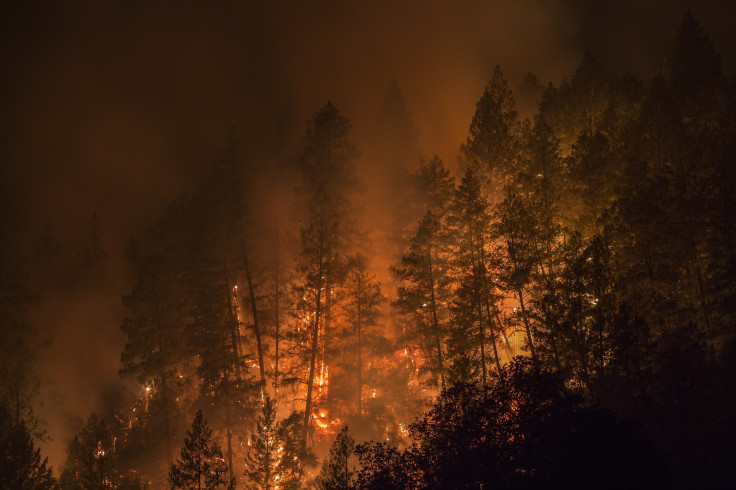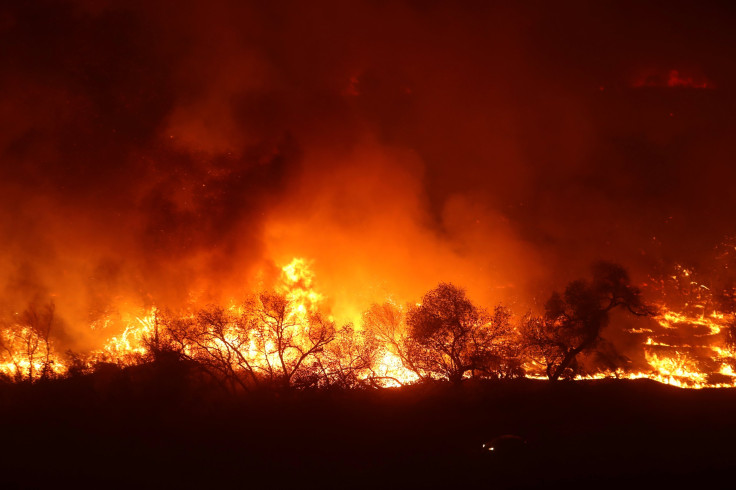How Do Wildfires Start? The 4 Ingredients Of A Forest Fire

It seems that a new wildfire pops up all the time, with flames bursting across acres and endangering people, animals and homes. It is hard to stop one of these massive blazes once they get going — when the conditions are right, they have the upper hand over firefighters because the climate is on their side.
Wildfires create walls of flames that soar into the air, several stories above the heads of anyone on the ground. If the scorching heat is not enough to kill someone or cause serious damage, the choking smoke gushing out of the burning forest could do the trick.
These wildfires start with the help of four basic ingredients:
No rain
The less rain there is, the greater the chance that a wildfire is going to start because fire and water generally do not hang out together. The effect of a drought is deepened in climates that are hot. Heat exacerbates the situation by promoting evaporation, removing from the land what little water there may be left.

Parched plants
This one goes hand in hand with the lack of rainfall — the less precipitation falls on an area, the drier plants like trees and shrubs become and the more vulnerable they are to lighting up. Think of it this way: It’s harder, and sometimes impossible, to set a material on fire when it’s wet, whether it be as small as a piece of paper or a match or as big as logs on a campfire. Periods of drought eat up all a plant’s moisture reserves and prep it to burst into flame at the slightest prompting.
A spark
That’s where this spark comes in. It doesn’t even have to be a big one and there are a number of potential sources. One of those is arson but, even though the majority of wildfires in places like California start because of human activities, it can be a total accident.
“We see a number of fires started every year by vehicles dragging chains,” Cal Fire fire prevention officer Don Watt said in a video, “or trailers just going off the shoulder and coming in contact with the ground that [causes] hot metal going into the grass.”
Any piece of metal that’s hanging underneath a moving vehicle could create sparks on asphalt and start a fire if those sparks are close enough to dry vegetation.
There is also malfunctioning equipment, a smoldering cigarette butt that was thrown onto the ground as litter or a flying ember from a campfire.
There are also natural causes, such as high gusts of wind blowing tree branches into electric lines and sending sparks flying, or strikes of lightning.
According to the National Weather Service, lightning will commonly appear as a flickering flash, but there are also some bolts that come down as continuous currents of electricity — and those are the ones that can give birth to a wildfire because there is a continuous flow of heat on flammable material.
Wind
Not all wildfires burn in tremendous wind, but the worst ones do. That’s because gusts of wind help spread flames from branch to branch, leaf to leaf. A wildfire can gain a tremendous amount of ground this way when foliage is packed tightly together, as it is in many forest environments.
In California, where many wildfires take place, first responders have to contend with the Santa Ana winds, which come from the inland direction, where there is desert, toward Southern California. The dry air moves quickly, according to the National Weather Service, making it a big wildfire risk.
© Copyright IBTimes 2024. All rights reserved.





















